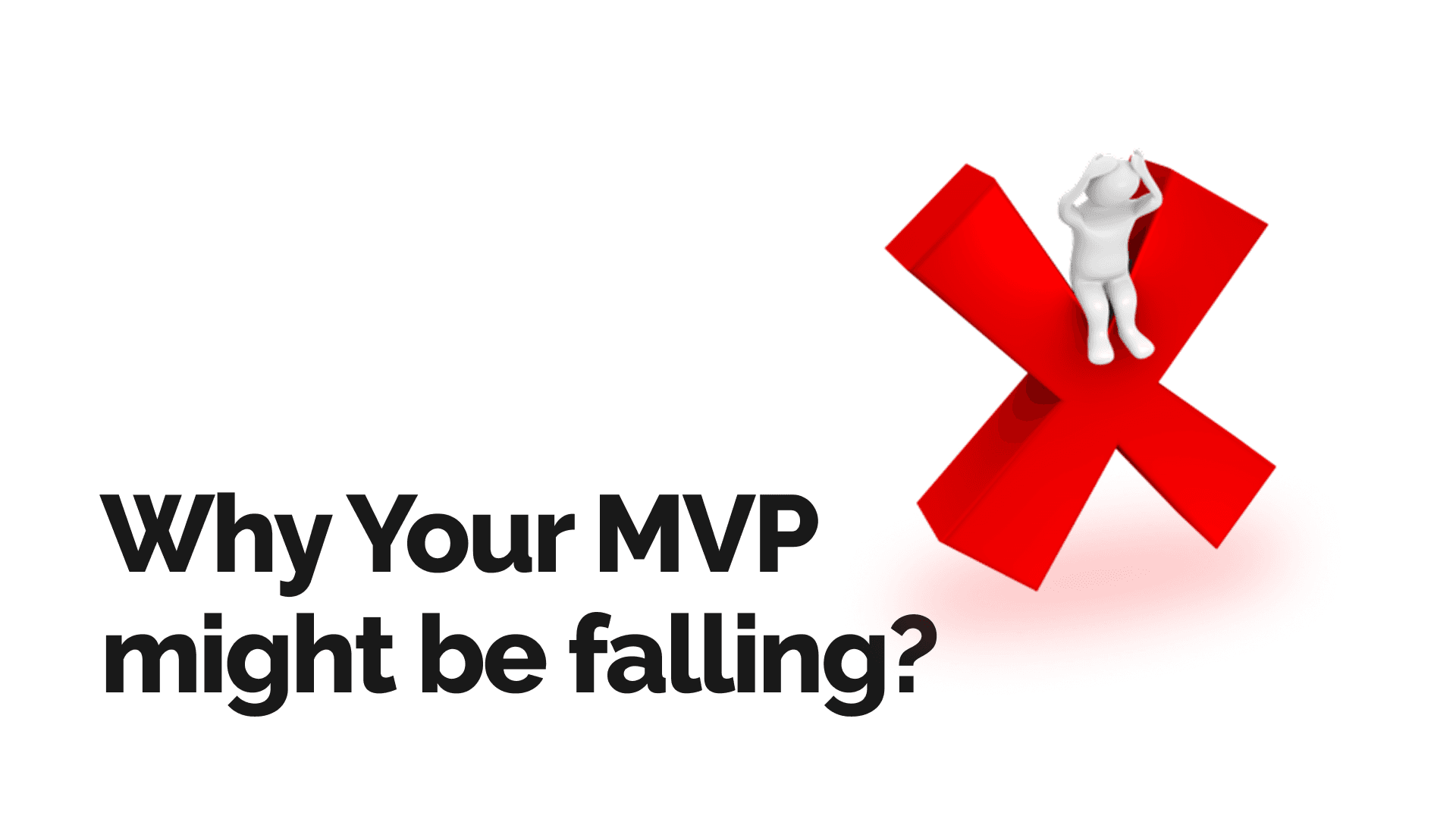
Team Fundamentals: The Building Blocks o...
In today’s dynamic workplace, where collaboration and innovation are p...
By Kumod Sah
Startup
Kumod Sah


Are you an early-stage founder or someone who is thinking of building a product? Then the excitement of bringing your product from vision to reality is obvious. However, what comes along with excitement is the uncertainty that lies in crafting the product from scratch to a fully functional system.
To help you overcome the uncertainty, in this blog we will be going through the must-knows about Minimum Viable Product (MVP). Let’s get started,
Before diving into the common mistakes that can affect your MVP’s success, let’s first take a brief look at the technical term itself.
Minimum Viable Product (MVP) is the most basic version of a product, built with the least amount of effort and resources. It is an early-stage product designed to attract early adopters and collect valuable feedback.
The primary goal of an MVP is to test whether the core values and concept of the product align with the needs and expectations of the target audience. By doing so, it allows startups and businesses to gauge product-market fit without committing to a fully developed product. This approach helps in minimizing risks, saving time, and investing resources wisely.
For example, Bytecare has successfully scaled MVPs from scratch to Version 2 products, such as the Karobar platform, by focusing on user feedback, refining core features, and scaling tech infrastructure based on real-world needs.
Now that we understand what an MVP actually is, let’s move forward. As a founder or someone involved in building products, you’ve probably come across several MVPs that seemed promising in the early stages but ultimately failed to deliver in the long run. Unfortunately, this is more common than you'd think. But what’s the reason behind this?
In this section, we'll dive into some of the critical mistakes founders often overlook, which can significantly hamper the success of their MVPs.
Lack of Clear Vision & Focus
Many founders rush to build an MVP without a clear understanding of the core problem they're solving. This often results in a product that lacks focus or direction.
Ignoring Customer Feedback
It’s easy to get attached to your product, but not gathering or acting on early user feedback is a major mistake. Ignoring the customer's perspective can lead to building features that aren’t valued.
Overcomplicating Features & Design
Trying to pack too many features into the MVP or over-engineering the design can waste resources and time, diverting attention from the core value proposition.
Inadequate Market Research
Building an MVP without validating demand or understanding your target audience leads to failure. Without market research, you risk creating a product no one wants.
Underestimating Resources & Post-Launch Planning
Many founders don’t account for the time and resources needed for post-MVP iterations, or fail to plan for future scaling. This leads to burnout and stagnation after the initial launch.
Now that you're aware of the common mistakes in MVP development, let's focus on strategies to build a strong and successful MVP. These best practices will guide you in overcoming challenges and ensuring a successful launch:
Focus on Core Features
Prioritize the most essential features that solve your target audience’s core problem. Avoid adding unnecessary functionalities. Start small and concentrate on solving the primary problem your product addresses, and build the MVP around that.
Validate Early with Target Users
Launch your MVP early to get feedback from real users. This will help you refine your product and avoid assumptions. Conduct usability tests, ask for direct feedback, and observe user behavior to gain insights into their needs and preferences.
Build a Simple, Intuitive Design
Make sure your MVP is functional and easy to use, even with a minimal design. Keep the user interface simple to avoid overwhelming users, ensuring it’s easy to navigate and communicates the product's value clearly.
Test, Measure, and Iterate
Continuously test your MVP with real users, measure engagement, and make improvements. Collect both qualitative and quantitative data to guide your iterations, and update your product regularly based on feedback to ensure it meets user demands.
Plan for Post-Launch
Be prepared for continuous development even after launch. Post-launch feedback will be crucial for scaling your MVP and adding more value. Set up a feedback loop and have a roadmap for scaling the product based on real user demands and evolving market needs.
Is it necessary to measure the success of an MVP, or can you simply jump into building the final product with all the features? This is a common question many founders face. However, the main reason most MVPs fail is because founders rush ahead without measuring the MVP's success.
Measuring the success of your MVP is crucial for several reasons. Without it, you risk investing time, money, and resources into a product that may not align with your target audience's needs. Here’s why measuring your MVP’s success is important:
Validates Market Demand
By measuring user engagement, feedback, and adoption, you confirm whether there is a real market need for your product. This gives you valuable data to either pivot, improve, or proceed with full-scale development.
Identifies Core Issues Early
Measuring your MVP’s success helps identify potential flaws and areas for improvement before you invest in building a full-fledged product. Early-stage feedback can help you fix issues that would be costlier to address later on.
Informs Product Development Decisions
Metrics like user retention, feature usage, and customer feedback offer insights into which aspects of your MVP are resonating with your users and which aren’t. This data-driven approach allows you to make informed decisions on which features to prioritize in the final product.
Ensures Resource Efficiency
Building a full product requires significant resources. Measuring your MVP’s success helps you allocate resources effectively, focusing on areas that provide the most value based on real user input.
Reduces the Risk of Failure
If your MVP doesn’t meet its success criteria, it’s better to know early on and adapt. Ignoring the importance of measuring MVP success may result in launching a product that doesn’t meet user needs, leading to wasted investment and failure.
Building an MVP is a vital step in turning your product idea into reality. To succeed, focus on your core value proposition, gather feedback from early users, and iterate quickly. An MVP isn’t about perfection, but learning and adapting.
Bytecare has successfully navigated this journey, transforming MVPs like Karobar from early-stage products into scalable, feature-rich platforms. The key takeaway is that scaling isn’t just about building more — it’s about building smarter, iterating based on real feedback, and investing in the right resources to support future growth.
Keep testing and evolving, and your MVP can lead to a successful product!
Published on May 5, 2025
Share this post